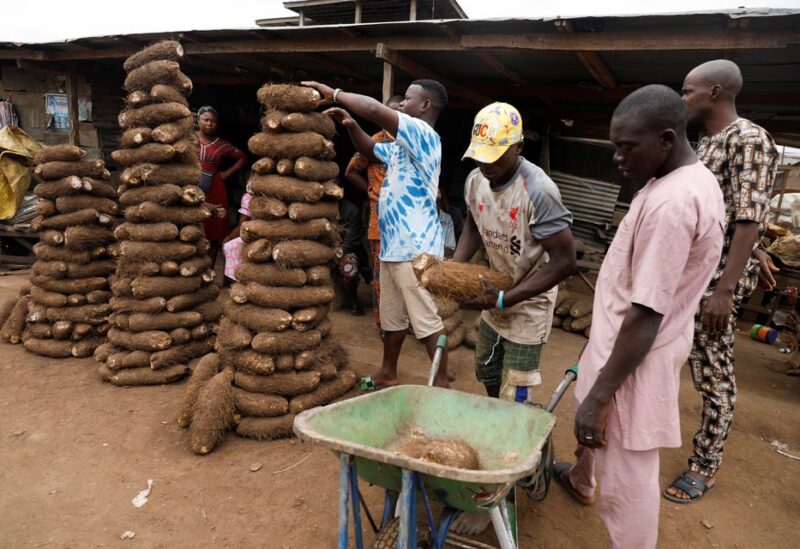
Yam sellers load yam tubers into a wheelbarrow at Bodija market in Ibadan, Oyo, Nigeria August 2, 2022. REUTERS/Temilade Adelaja
Stacks of hairy yams line an Ibadan market where vendors negotiate over price and quality before loading them onto vehicles to travel the last distance to Nigerian buyers. A man pushing a hand cart full with the tubers through congested nearby traffic.
Yams are a staple food and source of income for people all over West Africa when they are crushed into paste, ground into flour, boiled, or fried. However, the “yam belt,” which runs from Guinea to Cameroon, is seeing worsening growing conditions at the same time as rising costs for other necessities.
Vendor Adewale Elekun said farmers in Nigeria are already finding life harder than in the past, when soil was good and the land fertile.
“Today the quality of the soil has faded,” he said, amidst the bustle of the market.
Elsewhere in Ibadan, a transit and tech startup hub 130 km (80 miles) northeast of Lagos, molecular geneticist Dr Ranjana Bhattacharjee says she hopes to change things for the better by helping to create hardier and more adaptable plants.
She is working at the city’s International Institute of Tropical Agriculture to complete whole-genome sequencing of around 1,000 yam samples – work she says paves the way for moves to ensure future crops are more adaptable to a changing climate.
“If you want to make an improvement in crops, then you have to do genome sequencing to understand the genes of your targeted traits like disease resistance (and) quality,” Bhattacharjee said.
The need to boost locally grown crops is particularly acute because of global food price rises since some major producing countries decided to export less food and Russia’s invasion of Ukraine blocked that country’s grain and sunflower seed exports.
Yams, bigger than their unrelated north American namesake, symbolize prosperity, wealth and even fertility in West Africa.
Sequencing their genomes could help West African farmers, who grow some 90% of all yams worldwide, improve their yield and keep it high, said Bhattacharjee, adding once the results are published, others will work on applying them.
“That will then ultimately lead to food security, not only in Nigeria but also in West Africa where the yam is being grown,” she said.